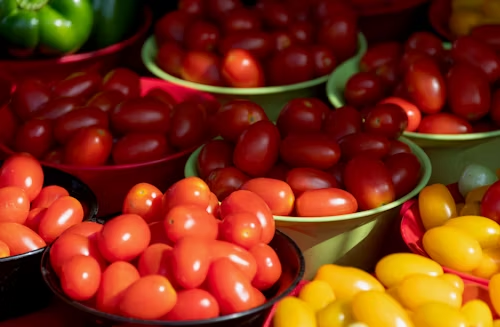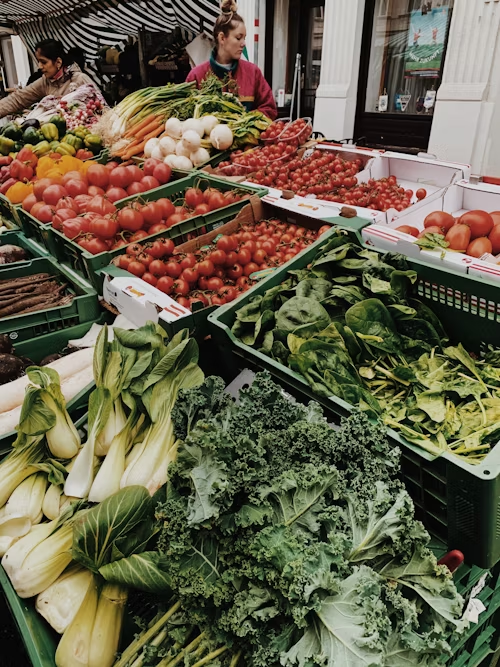The Heart of Community Prosperity: How Local Marketplaces Empower Artisans and Farmers

The significance of supporting local economies is more pronounced than ever. Local artisans and farmers are not just producers; they are the backbone of cultural and agricultural sustainability in their communities. By connecting these valuable contributors directly with customers, local marketplaces offer a unique opportunity to enhance economic viability, ensure product freshness, and sustain cultural heritage. This blog post explores the importance of local artisans and farmers, strategies for connecting them with consumers, the support local marketplaces can provide, and tips for effective market day planning.
Understanding the Role of Local Artisans in Community Vitality
Local artisans contribute significantly to the cultural and economic fabric of their communities. They keep traditional crafts alive while innovating to meet modern demands. Artisans range from woodworkers and metalworkers to painters, sculptors, and textile artists. Their work not only reflects the community's identity but also attracts tourism, which can be a significant economic booster.
- Cultural Preservation: Artisans help maintain and pass on traditional skills and knowledge that might otherwise be lost in the modern world.
- Economic Impact: By purchasing materials locally and selling to local consumers, artisans help circulate money within the community, supporting regional economic stability.
- Social Connectivity: Artisans often serve as connectors in the community, bringing people together through workshops, exhibitions, and local markets.
Connecting Farmers and Customers: A Win-Win for Freshness and Economy
Connection between farmers and customers is crucial. It not only ensures the freshness of produce but also reduces the carbon footprint associated with long transportation routes. Farmers markets and local trade platforms are excellent venues for fostering these connections, providing customers with access to fresh, high-quality products directly from their source.
- Enhanced Freshness: Customers receive products at the peak of their freshness, which can significantly enhance taste and nutritional value.
- Reduced Environmental Impact: Local selling minimizes the need for long-distance transportation, which in turn reduces greenhouse gas emissions.
- Strengthened Local Economies: Money spent on local produce stays within the community, supporting local farmers and contributing to their ability to operate sustainably.
How Local Marketplaces Support Artisans and Farmers
Local marketplaces are more than just physical or online locations where transactions occur. They are pivotal in building a support network for artisans and farmers by providing platforms for exposure, sales, and community engagement. These marketplaces can take various forms, from weekly farmers' markets to permanent artisan co-ops or seasonal pop-up shops.
- Visibility: Offering booth space or listings, marketplaces help artisans and farmers reach a broader audience.
- Community Engagement: Markets provide a social venue for producers and consumers to interact, share stories, and build relationships.
- Business Support: Many marketplaces offer resources such as marketing assistance, business advice, and even financial aid or microloans to help small producers thrive.
Effective Market Day Planning for Maximum Impact
Market day is crucial for artisans and farmers. It's their opportunity to showcase their products, interact with customers, and make sales that are often vital for their livelihoods. Effective market day planning can significantly impact their success.
Pre-Market Preparation
- Inventory Management: Ensure that there is enough product to meet potential demand, but not so much that excess goes to waste.
- Logistics: Plan the transportation of goods to and from the market, considering factors like temperature control for perishable items.
- Booth Setup: Design an inviting and efficient booth layout that makes it easy for customers to see and access products.
During the Market
- Customer Engagement: Be approachable and ready to answer questions about your products. Personal connections can lead to repeat sales.
- Demonstrations: If applicable, conducting live demonstrations can attract more visitors to your booth.
- Payment Solutions: Offer multiple payment options, including cash, credit/debit cards, and mobile payments to accommodate different customer preferences.
Post-Market Analysis
- Sales Tracking: Keep detailed records of what sold well and what did not, to inform future production and marketing strategies.
- Customer Feedback: Gather insights from customers during the market to improve products and customer service.
- Networking: Use market days to connect with other vendors for potential collaborations or bulk purchasing opportunities.
Conclusion
Supporting local artisans and farmers through robust local marketplaces is essential for sustainable community development. These markets not only serve as economic catalysts but also help in preserving the cultural uniqueness of a community. By planning effectively for market days, artisans and farmers can maximize their exposure and sales, thereby securing their crafts and livelihoods for the future. As consumers, participating in these local economies not only provides us with unique, high-quality products but also contributes to the creation of vibrant, resilient communities.
Embrace the richness of your local marketplace—where every purchase makes a profound impact on the local economy and supports the artisans and farmers who are the very heartbeat of the community.



